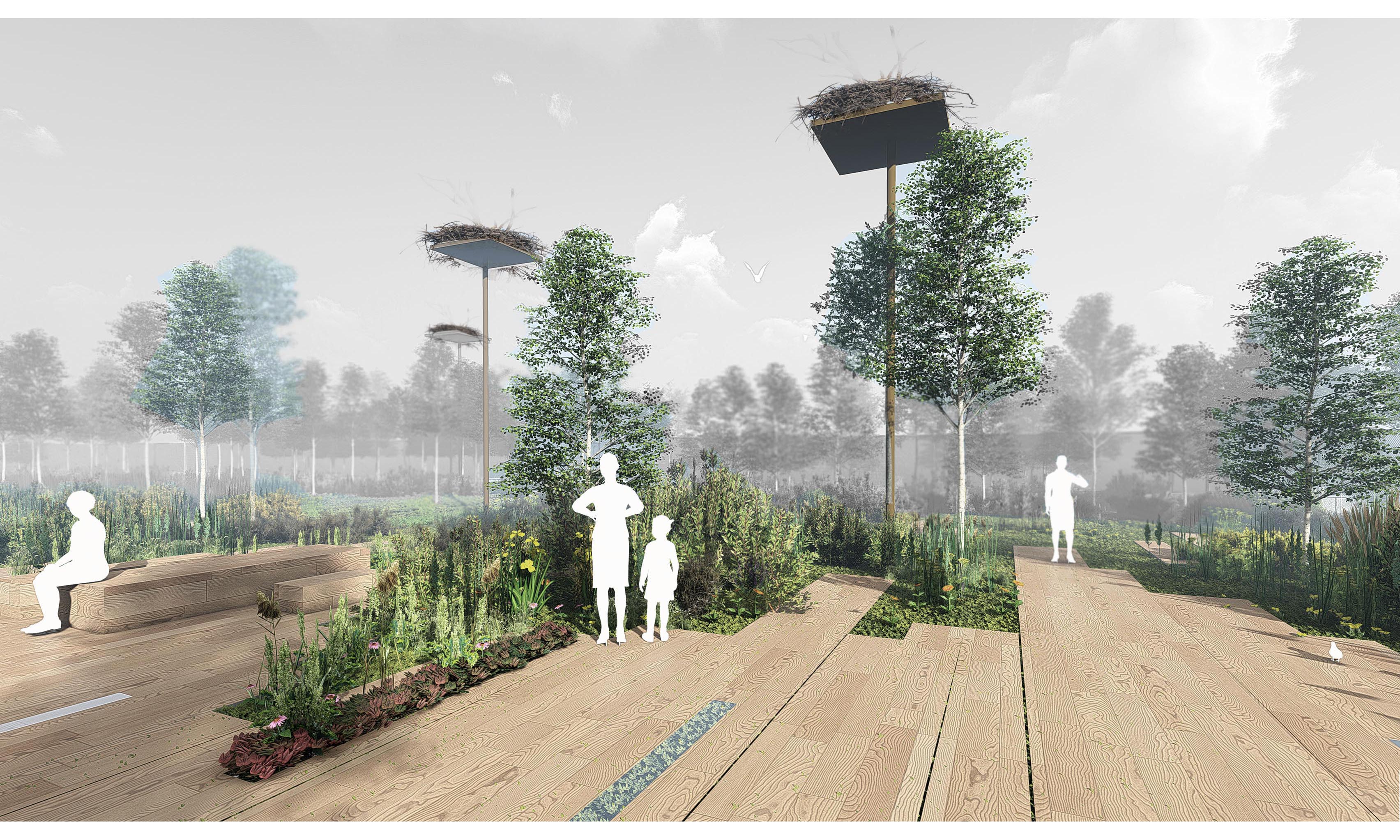
Transitioning. GRAND TRUNK PEDESTRIAN BRIDGE
Landscape Architecture Studio II
University of Calgary / School of Architecture, Planning and Landscape
In Calgary, neighbourhoods Inglewood and Ramsay are known for their large parks, the riverfront, and eclectic commercial street of 9th Avenue. The Canadian Pacific Railway (CP) and historical Grand Trunk Pacific Railway (GTPR) also played a significant role in the conception of these neighbourhoods. The GTPR was decommissioned in the 1960s after it merged with CP. Now only berms and residual open spaces are left over from this historical railway.
After the introduction of the automobile on the global market, Calgary underwent further redevelopment with the emergence of massive highways. Thus, fragmentation continued. Seemingly prioritizing the connection of the railway and vehicular traffic became the focus, leaving pedestrians and cyclists with minimal connections. Since then, parkspace has been severed and pinched.
The Grand Trunk Pedestrian Bridge was conceived to suture a connection between the large park systems, due to the major highway Blackfoot Trail. Remembering the historical railway presence, the pedestrian bridge follows the traces left over from the Grand Trunk Pacific Railway leading its users to either side of the highway. With a variety of wildlife that also use these green spaces, including hares, deer, etc. the bridge also accommodates for the movement of wildlife to create an environment where both people and wildlife can cohabitat generating new linkages and potential.
